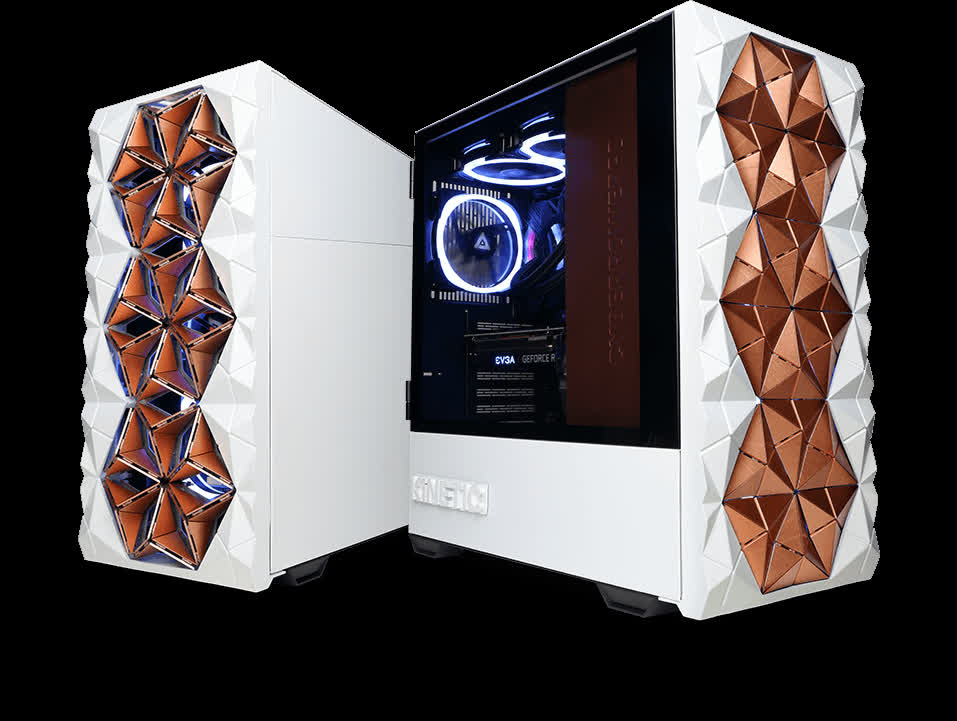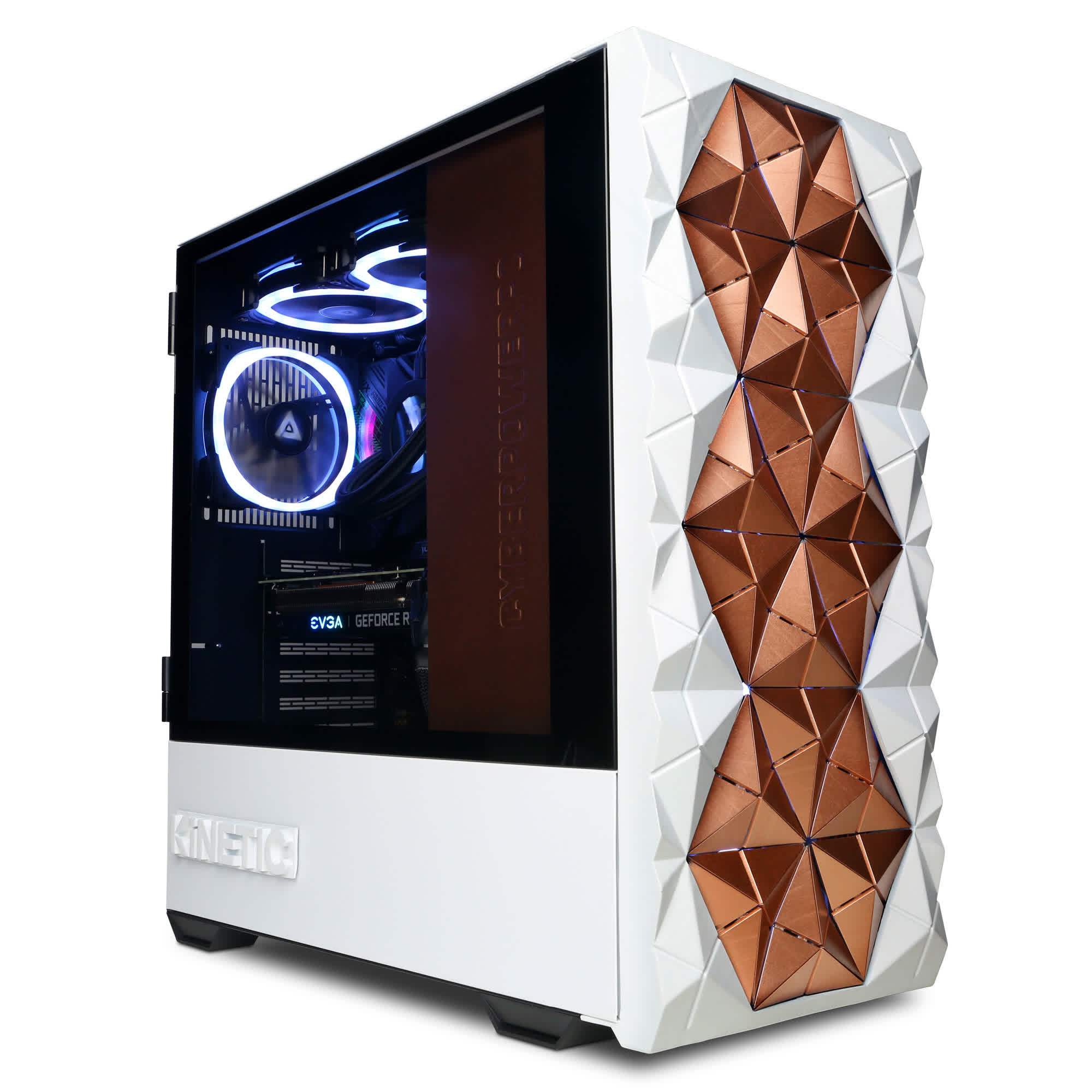WTF?! Worried that PC case designers might be running out of ideas? CyberPowerPC has proved that innovation isn’t dead with its Kinetic Series, which features 18 motorized triangular vents and looks like something straight out of Deus Ex.

“Rather than simply adding more airflow, we wanted a case that dynamically provided appropriate airflow for the situation in real-time,” says CyberPowerPC creative director Nam Hoang in the Kinetic Series launch video below.
CyberPowerPC told Tom’s Hardware that the vents are controlled by 18 servos connected to a post and collar inside the chassis. When the system’s internal ambient temperature is low, the vents stay mostly closed to keep noise down and dust out, but when temperatures start to get toasty, they open to increase airflow into the chassis.
Hoang notes that all the vents don’t fully open or close based on a single temperature threshold. Each one can contract and expand to varying degrees based on the temperatures of the system, and users can set the temperature ranges for when the vents should start operating.
The case has triangular cutouts at the top to allow air in when the vents are closed. There also appears to be a dust-preventing mesh cover on the roof.
The mid-tower Kinetic Series case comes in black or white and supports up to ATX motherboards. Users can pack it with radiators up to 360mm in length and up to seven 120mm fans (or five measuring 140mm). It will cost $249 when it goes on sale in Q3, which is around what you’d pay for most higher-end chassis.
It’ll be interesting to see if the Kinetic Series works as well as CyberPowerPC claims, but the case certainly looks cool.
https://www.techspot.com/news/92860-cyberpowerpc-case-features-18-motorized-vents-open-close.html

